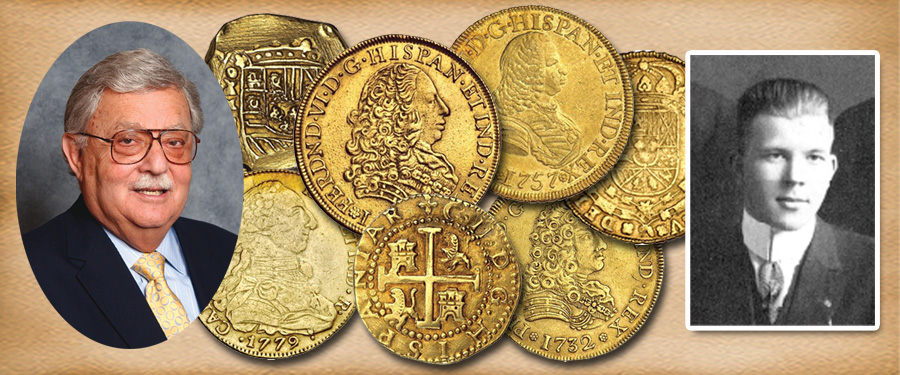
It
took over 16 years to build the Josiah K. Lilly Collection into a world class
collection. After Josiah K. Lilly’s death in 1966, Paul Rawley, Trust Officer
at the Merchants National Bank in Indianapolis was given the long and difficult
job of getting all of the Lilly collections inventoried and appraised. Mr.
Rawley took a personal and direct interest in making sure the collections
were distributed as directed.
As
noted earlier, Dr. and Mrs. Clain-Stefanelli had examined the Lilly Collection
and believed that such an extensive, quality collection should not be broken
up. They worked to get the coins from the collection preserved as part of the National
Numismatic Collection at the Smithsonian Institution. He approached the chiefs
and top executives at the Smithsonian and, at the suggestion of Paul Rawley, he
also went to the congressmen and senators from Indiana. They agreed with the
recommendations from Dr. and Mrs. Stefanelli and they said they would permit
proposal of a Bill before Congress to acquire the Lilly Collection for the
National Coin Collection. But, of course, they wanted to see the result of the
collection’s appraisal.
The
list of individual coins in the J.K. Lilly gold collection was appraised at
$4.5 million. This may not seem like much in the 21st century, but the value of
gold in 1966 was about $35 per ounce, thus the base value without any
numismatic premium was much lower than it would be today. This was especially
important for the more common coins. Additionally, at the time the demand for
the major rarities was not as great as it is today.
However,
the appraisers increased the value of the entire collection to $5.5 million based
on its vast size and completeness. Such a collection would be so difficult to
duplicate that its value was more than the sum of its parts.
The
valuation was approved by the executor and later by the I.R.S. Then the bill
for the acquisition of the Lilly Gold Coin Collection was set forth. It was
done in an unusual way, so that it would benefit the estate, while giving the
Smithsonian this world class collection.
The
bill provided first for the removal of the collection from the estate’s assets,
as if it had been given before J.K. Lilly’s death. The bill also provided for a
tax credit of the appraised amount. These benefits reflected that the
collection was a unique opportunity to enhance the National Numismatic
Collection with incredible coins in the United States, Ancient and Foreign
series.





